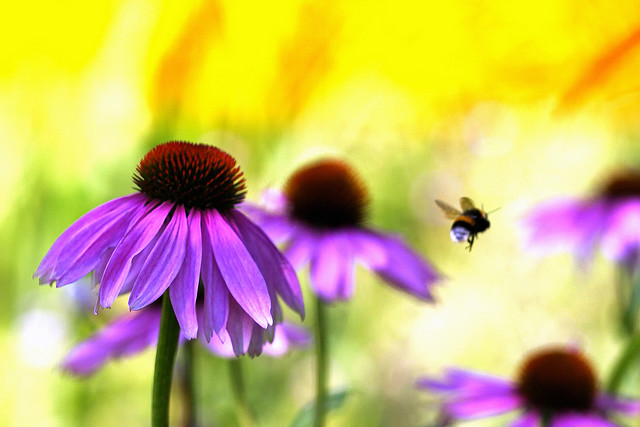
How much do bugs bug you?

Living in Colorado, we have our fair share of bugs. Usually when spring rolls around, I buy the spray from home depot for the perimeter of the house and hope for the best but by the time summer hits, there are always a few crawling around, and that really bugs me! After I received an email from the West Greeley Conservation District, I started to think twice about what bugged me about bugs and how important they truly are to our Northern Colorado ecosystem. Specifically, pollinating insects like bees and butterflies are incredibly important because they are part of a delicate equation that works toward the survival and resilience of “crops, native forbs, grasses, and trees” according to the WGCD.
To understand the pollination process a little better, here is a quote from the WGCD who are some of our local experts on the process. “Pollination occurs when pollen is transferred from within flowers or between flowers by a pollinating animal such as bees, butterflies, moths, beetles, birds, bats, and others or via the wind. The transfer of pollen leads to fertilization and in turn seed and fruit production. Pollinators, the animals which pollinate flowers, are required for the success of many of the food, beverages, fiber, spices, and medicines we depend upon. Pollinators and consequently our livelihood is threatened by the decline of pollinator habitat, chemical misuse, non-native plants and animals, disease, and parasites. “
Part of our pride and joy at Union Colony Insurance are our many farmers whose crops we insure. In order to protect these precious pollinators and therefore protect our native crops and ecosystems, we can all play an important role. The WGCD advises that we should plant native species of plants in our gardens and around our houses to attract pollinators and provide them with food and shelter. Additionally, we should all practice integrated pest management. You may be wondering what that means (I sure did!). Well, integrated pest management basically takes into account multiple factors including the active ingredients of the chemicals, the method of application, the timing, weather conditions, target species and more. This allows for you to employ the best method of pest management before just spraying that home depot stuff around your house. So, as WGCD says “next time you see a bee, butterfly, hummingbird or other pollinator, take a moment to observe them and appreciate all that they do for us!”
*Thank you Megan at the West Greeley Conservation District for this great information.*
Categories: Blog
